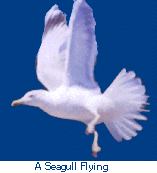Montenegro


 One-third
of Montenegro, principally in the high mountains, remains covered with
broad-leaved forest. However, bare rock characterizes most of the southern
Karst zone, where soils generally are absent. This area remained forested
through classical times, with oaks and cypresses predominating, but removal
of forests for domestic fuel and construction led to widespread soil erosion
and, ultimately, to replacement of the woodlands by the Mediterranean scrub
assemblage known as maquis.
One-third
of Montenegro, principally in the high mountains, remains covered with
broad-leaved forest. However, bare rock characterizes most of the southern
Karst zone, where soils generally are absent. This area remained forested
through classical times, with oaks and cypresses predominating, but removal
of forests for domestic fuel and construction led to widespread soil erosion
and, ultimately, to replacement of the woodlands by the Mediterranean scrub
assemblage known as maquis.
Sparsely populated Montenegro is noted as a habitat for numerous mammals, including bears, deer, martens, and wild pigs (Sus scrofa). It has many predatory wild animals, including wolves, foxes, and wildcats. The republic also has a rich variety of birds, reptiles, and fish.

